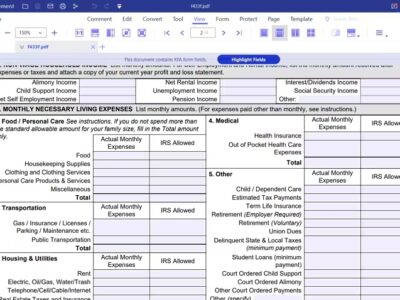
In the world of business, debt can be a double-edged sword. On one hand, it provides the necessary capital to fuel growth and expansion. On the other hand, it can become a burden that hampers profitability and stifles innovation. For loan-backed businesses, finding the right balance between debt and profitability is crucial for sustainable growth and success.
Understanding Debt and Profitability
Before delving into finance optimisation techniques, it is important to understand the relationship between debt and profitability. Debt, in the form of loans or lines of credit, provides businesses with the funds needed to invest in new equipment, expand operations, or launch new products. However, taking on too much debt can lead to high-interest payments and financial strain, which can eat into profitability.
Profitability, on the other hand, is the ultimate goal of any business. It measures the ability of a company to generate earnings and create value for its shareholders. Balancing debt and profitability requires careful management of financial resources and a keen understanding of the business’s cash flow and financial health.
Optimising Debt for Profitability
One of the key finance optimisation techniques for loan-backed businesses is to carefully manage and optimise their debt. This involves finding the right mix of debt instruments, such as long-term loans, short-term lines of credit, and revolving credit facilities, to meet the business’s financing needs while minimising interest costs.
Additionally, businesses can explore debt refinancing options to take advantage of lower interest rates or better terms, which can help reduce the overall cost of debt and improve profitability. Working with financial advisors and lenders can help businesses can identify opportunities to restructure their debt to better align with their cash flow and revenue projections.
Managing Cash Flow and Working Capital
Another crucial aspect of balancing debt and profitability is managing cash flow and working capital effectively. Loan-backed businesses must have a clear understanding of their cash flow needs and the working capital required to support their operations. By closely monitoring cash flow and working capital, businesses can identify opportunities to reduce expenses, improve efficiency, and free up cash for debt repayment and investment in growth initiatives.
Furthermore, businesses can implement cash flow forecasting and working capital management strategies to ensure that they have the necessary liquidity to meet their debt obligations while maintaining profitability.
This may involve negotiating favourable payment terms with suppliers, streamlining inventory management, and implementing efficient accounts receivable processes to accelerate cash inflows. By optimising cash flow and working capital, businesses can reduce their reliance on debt and improve their overall financial health.
Investing in Profitable Growth Initiatives
Balancing debt and profitability also requires a strategic approach to investing in growth initiatives. While taking on debt to fund expansion and innovation can be necessary, businesses must carefully evaluate the potential return on investment and the impact on profitability.
Businesses can maximise the value created from their debt-funded investments and ensure that they generate a positive return that outweighs the cost of debt by focusing on profitable growth initiatives.
This may involve conducting thorough financial analysis and scenario planning to assess the potential impact of different growth initiatives on profitability and debt repayment.
Further, prioritising investments that have the highest potential for profitability and align with the business’s long-term strategy helps loan-backed businesses optimise their debt usage and drive sustainable growth.
Diversifying Funding Sources
Loan-backed businesses can also benefit from diversifying their funding sources to reduce their reliance on debt and improve their financial flexibility. In addition to traditional bank loans, businesses can explore alternative financing options, such as venture capital, private equity, or crowdfunding, to access additional capital without taking on more debt.
Diversifying their funding sources helps businesses spread out their financial risk and reduce their exposure to the potential downsides of excessive debt. This can also provide businesses with access to different types of capital that may be better suited for specific growth initiatives or strategic objectives.
Implementing Robust Financial Reporting and Analysis
Effective financial reporting and analysis are essential for loan-backed businesses to monitor their debt levels and profitability. By implementing robust financial reporting and analysis processes, businesses can gain a clear understanding of their financial performance, debt obligations, and the impact on profitability.
This may involve implementing key performance indicators (KPIs) to track financial metrics such as debt-to-equity ratio, interest coverage ratio, and return on investment. By regularly reviewing and analysing these KPIs, businesses can identify potential areas for improvement and take proactive measures to optimise their debt and profitability.
Seeking Professional Financial Advice
Finally, loan-backed businesses can benefit from seeking professional financial advice to help navigate the complexities of balancing debt and profitability. Financial advisors and consultants can provide valuable insights and expertise to help businesses develop tailored finance optimisation strategies that align with their specific needs and goals.
Working with an experienced professional can help businesses gain access to valuable resources, industry insights, and best practices that can help them make informed financial decisions and optimise their debt and profitability effectively.
Conclusion
Finding the sweet spot between debt and profitability is no easy feat, but it’s crucial for the long-term success of loan-backed businesses. Carefully managing debt, optimising cash flow, investing in growth wisely, diversifying funding sources, and seeking professional advice help businesses navigate the complexities of finance and set themselves up for sustainable growth and profitability.
It’s a balancing act, but with the right strategies in place, businesses can thrive and achieve their financial goals. Remember, it’s not just about taking on debt, but about making it work for you in the pursuit of profitability.











